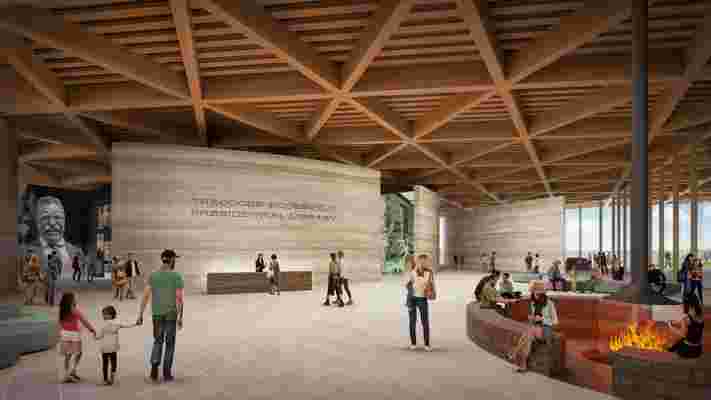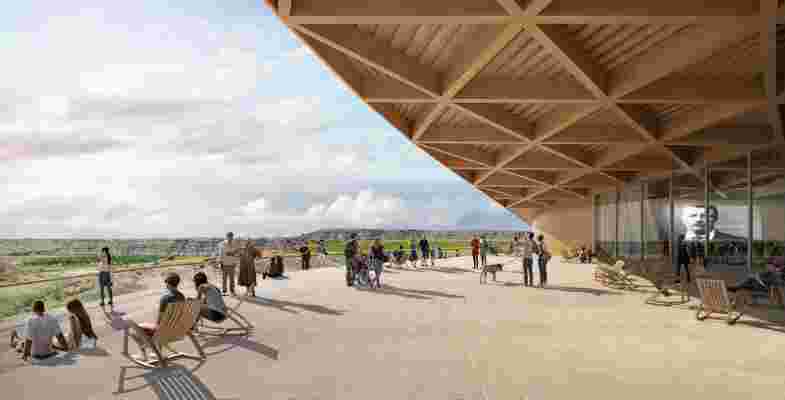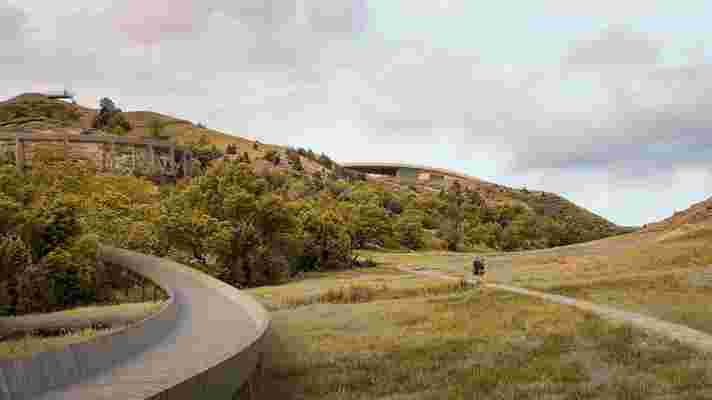The Theodore Roosevelt Presidential Library Will Be Designed by Snøhetta
There are few Americans, let alone American presidents, who read more vigorously than Theodore Roosevelt did. Which is why it’s long overdue that our 26th president finally has a presidential library. It was just announced that the international firm Snøhetta won the bid to design the space, which will be located in North Dakota’s Badlands. The international competition, which included such lauded architecture firms as Studio Gang and Henning Larsen, spanned five months.
It may surprise some to learn that it’s taken over a century since Teddy Roosevelt’s death in 1919 to design his presidential library. But, in fact, it was his nephew and future U.S. president, Franklin Roosevelt, who began the presidential library tradition in 1939. Nevertheless, the weight and complexity that comes with creating a presidential library for such a revered and larger than life figure as Teddy Roosevelt was not an easy task. Yet, Snøhetta was not just up for the challenge—the firm leaned into it. “It’s not the first time we’ve addressed such challenges of historical weight,” says Craig Dykers, a founding partner at Snøhetta. “The Bibliotheca Alexandrina [in Egypt], though not dedicated to a single person, was the first time we had to discuss the myth of a space versus present context. Likewise the World Trade Center museum in New York was not dissimilar. What we tried to do in those projects, as with this one, was find a universal language that doesn’t specifically represent a person, or place, or historical context. We felt that the scene of an ascension is one of those things that’s universal. As we see things rise in front of us, we are optimistic and inspired. That, for us, is where everything began with this library.”

A view of the museum’s interior.
While Teddy Roosevelt was born and raised as a well-to-do East Coaster, his character was perhaps more in line with the rugged American West. Indeed, after sweeping tours throughout Europe, the 26th president felt that the United States’ forests were what cathedrals were in Europe. American mountains were like monuments to the Old World. Which is one of the many reasons Medora, North Dakota—a town on the Little Missouri River that sits just south of the Theodore Roosevelt National Park—was selected as the site for the presidential library. After visiting Medora, Dykers and his team were completely awestruck by the natural beauty and vibrancy of the location. “It’s always best to start with your second thought,” Dykers explains. “Our minds were radically changed with the project when we first visited the site, and Medora. It was a completely different thought we had than what we had envisioned before.”

A view of the museum’s interior.
The building itself will house artifacts that defined the 26th president. But by no means will this be a static environment for learning. The space, which will likely be completed by 2025, will feature immersive galleries, theaters, and experiences that encompass key themes and moments from Roosevelt’s life. Snøhetta’s design looks as if it belongs in the Badlands, a feat that wasn’t easy to accomplish. “While you won’t find a single shape like that in the region, it certainly feels as though it belongs there,” Dykers says. “The project isn’t just about a building, it’s also about the landscape. Our design freed the entire space for an experience that comes in direct contact with the landscape. In fact, our landscape architects at Snøhetta have been leading the process, and it’s something that I am very proud of.”

The landscape architects at Snøhetta were adamant about using native plants outside of the museum.
Of course, there are real challenges that come with designing a space in such sacred land. And there’s immense pressure in creating a presidential library in a small town with the anticipation that people from around the world will come visit. Yet Snøhetta was inspired by this challenge, and the results speak for themselves. “We started with an idea that if you have a building that has to be used and visited by a lot of people, then the design has to first be for everyone within a 15-minute radius of site. Don’t think about Japan or Germany or someone from Los Angeles. Just think about those people who live right there. If those around the world who are interested in this project know that those in the community love and respect it, they will come and have a greater appreciation for its authenticity and meaning.”
While vice president, Theodore Roosevelt became president of the United States without knowing that his predecessor, who had been shot eight days prior, had died. As such, it seems fitting that his presidential library is being built without his knowing. It’s perhaps the best time for Teddy Roosevelt’s presidential library to be erected. At this moment of stark national divide, it would behoove us all to remember those qualities that our best leaders possessed. As a journalist remarked at the inauguration of Theodore Roosevelt after the death of President McKinley, “he symbolizes the magnificent moral and mental balance of the nation.”